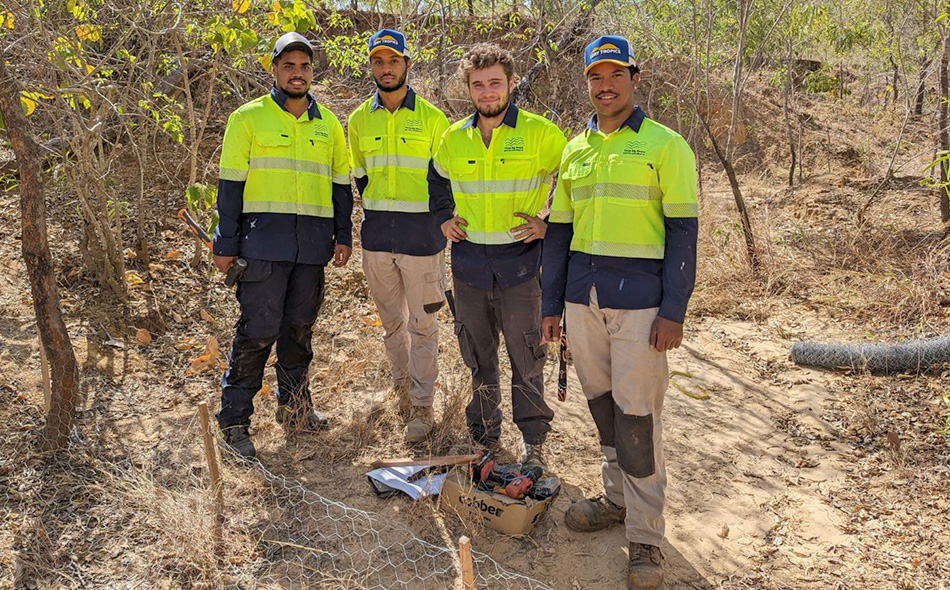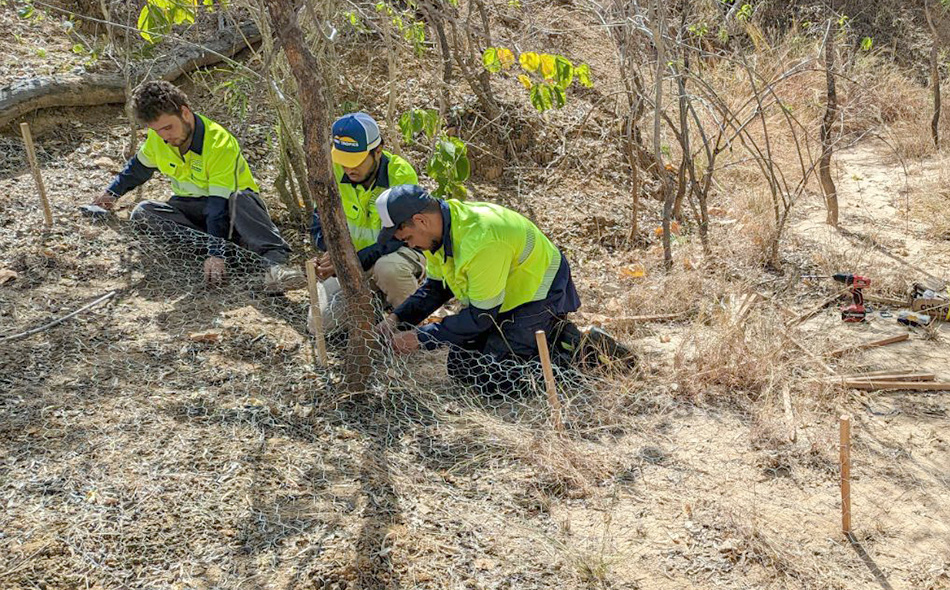Get the ‘healing touch’ to help repair small gullies and scalds
After resting, does your paddock still have patches of bare earth (scalds) that aren’t healing, or small gullies continuing to creep?
NQ Dry Tropics’ Healing Country team can help landholders tackle small-scale erosion before it develops into a bigger problem. The team uses non-mechanical methods where fragile soils mean machines aren’t the best option.
One example is the use of leaky weirs (porous check dams), soft-engineered ‘natural’ eco-structures designed to trap sediment and help promote vegetation growth.
Properties in the BBB, East Burdekin, or Lower Burdekin regions are eligible.
Gullies must be no more than three metres deep to be considered.
Temporary cattle exclusion may be required to get the best result.
Apart from some bales of hay, no resources are required from landholders. This is a great opportunity to address those niggly problem areas.
For more information and to get help applying, contact:
Pictured mid-construction of a leaky weir on Byrne Valley near Home Hill are Three Big Rivers team members (from left): Kai Martin-Savage, Ethan Upkitt, Cade Wells and Tyrese Nellimane.
First Nations jobs on Country project kicks off
A $1.37 million Queensland Government investment enabling young First Nations people to connect with Country while helping to improve land condition and reducing sediment run-off kicked off at a property near Home Hill this month.
The second phase of the NQ Dry Tropics Healing Country project will run for two years.
The project is funded through the Queensland Government’s $33.5 million Reef Assist program under the Queensland Reef Water Quality Program and is led by NQ Dry Tropics and delivered by various partners including Three Big Rivers who tackled the first task at Byrne Valley near Home Hill.
Gudjuda Aboriginal Corporation Limited, and Biodiversity Australia will also help deliver the project.
Team members will work on sediment control activities on grazing properties, primarily small gully repair, to reduce sediment runoff from the Burdekin catchment and improving water quality flowing into the Great Barrier Reef lagoon.
Since the initial project launched in 2020, project team members, many identifying as First Nations, gained practical on-ground work experience and gained skills through an accredited environmental training program.

 JAKE
JAKE
